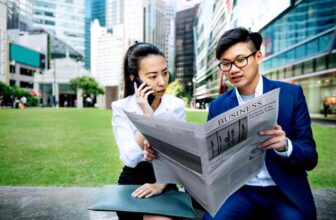
Cost of Environmentally Friendly Food Packaging Products in Malaysia
Introduction to Eco-Friendly Food Packaging in Malaysia
Environmentally friendly food packaging in Malaysia is gaining attention across the country. As consumer awareness increases, businesses are switching to sustainable packaging solutions. However, cost remains a key concern. The price of eco-packaging in Malaysia varies depending on material, supplier, and order volume. This article explores the factors influencing costs, benefits, and trends related to green food packaging in Malaysia.
Why Malaysia Is Shifting Towards Eco-Friendly Packaging
Malaysia’s government and consumers are pushing for sustainable practices. Policies and public demand encourage brands to adopt biodegradable or compostable packaging. This movement aims to reduce plastic waste, protect the environment, and support green business initiatives. Companies that comply with this shift also enjoy improved brand reputation.
Types of Eco-Friendly Food Packaging Available
1. Biodegradable Plastics
Made from renewable resources like corn starch, these break down faster than traditional plastics. They cost more but are widely accepted.
2. Paper-Based Packaging
Used for wraps, cups, and boxes, paper packaging is cost-effective and easy to brand. It’s compostable and recyclable.
3. Bagasse (Sugarcane Fiber)
A popular material for plates, bowls, and containers. It’s heat-resistant and safe for food contact.
4. PLA (Polylactic Acid)
Derived from fermented plant starch, PLA is transparent like plastic but fully compostable under industrial conditions.
5. Bamboo and Palm Leaf Packaging
These materials are natural, sturdy, and stylish. They are best for premium branding but come at a higher cost.
What Determines the Cost of Eco-Friendly Food Packaging in Malaysia
1. Raw Material Used
The price of natural or compostable materials is usually higher than plastic. Importing adds to costs.
2. Production Volume
Bulk orders can significantly reduce per-unit cost. Small businesses pay more due to low quantity purchases.
3. Customization
Branding with logos, colors, and unique shapes increases the cost. Plain eco packaging is cheaper.
4. Certifications and Compliance
Packaging with certifications like “food-safe,” “compostable,” or “biodegradable” may come at a premium.
5. Transportation and Logistics
Eco-packaging is often imported. Transport costs affect final pricing, especially for small local suppliers.
Average Price Range of Eco-Friendly Food Packaging
| Packaging Type | Estimated Cost (Per Unit) |
|---|---|
| Biodegradable Plastic Bag | RM 0.30 – RM 0.60 |
| Paper Food Box | RM 0.50 – RM 1.20 |
| Bagasse Tray | RM 0.80 – RM 1.50 |
| PLA Cup | RM 0.60 – RM 1.00 |
| Bamboo Food Container | RM 1.50 – RM 3.00 |
Prices fluctuate based on quantity, design, and delivery terms.
Benefits That Justify the Cost
- Reduces carbon footprint
- Builds a sustainable brand image
- Meets environmental regulations
- Attracts eco-conscious customers
- Less harm to marine and land ecosystems
Though initially expensive, the long-term value outweighs the cost.
Tips to Lower Eco-Packaging Costs
- Order in bulk to get better rates
- Choose local suppliers to reduce transport fees
- Limit customization to essentials
- Compare prices from multiple vendors
- Opt for simple designs and standard sizes
Strategic sourcing helps businesses balance cost and sustainability.
Challenges Faced by Malaysian Businesses
Many SMEs struggle with cost. Lack of local production increases prices. Limited public awareness reduces demand. Still, the market is evolving. More suppliers are emerging. The government offers support for green initiatives. Businesses need to adapt early to gain an edge.
Future Trends in Sustainable Packaging
- Increase in local eco-packaging manufacturers
- Government incentives for green packaging adoption
- Wider availability of compostable materials
- Technological innovation reducing prices
- Consumer demand shaping packaging decisions
Malaysia is on the path toward a greener packaging future.
FAQs
1. Is eco-friendly food packaging more expensive than plastic?
Yes, eco-packaging is generally more expensive due to raw materials, certifications, and lower production scale. However, bulk purchases help reduce the cost.
2. Can I get customized eco-friendly packaging in Malaysia?
Yes. Many suppliers offer customization, but it increases the cost. Consider minimal branding to manage expenses.
3. Where can I buy affordable eco-packaging in Malaysia?
You can source from local wholesalers, online marketplaces, or specialized eco-packaging suppliers like Green Eco Paradise, Foodabox, or Ecopack.
4. Are there government grants for using sustainable packaging?
Some Malaysian agencies offer green tech grants and SME support schemes. Check with MIDA, SME Corp, or MGTC for the latest updates.
5. What is the cheapest type of eco-friendly packaging?
Paper-based packaging is usually the most affordable option. It’s easy to source, recyclable, and suitable for many food types.
Conclusion
Eco-friendly food packaging in Malaysia is a growing necessity. Though the costs are higher than plastic, the benefits for businesses, the environment, and society are substantial. By planning wisely and sourcing smartly, Malaysian businesses can adopt sustainable packaging without breaking the bank.







